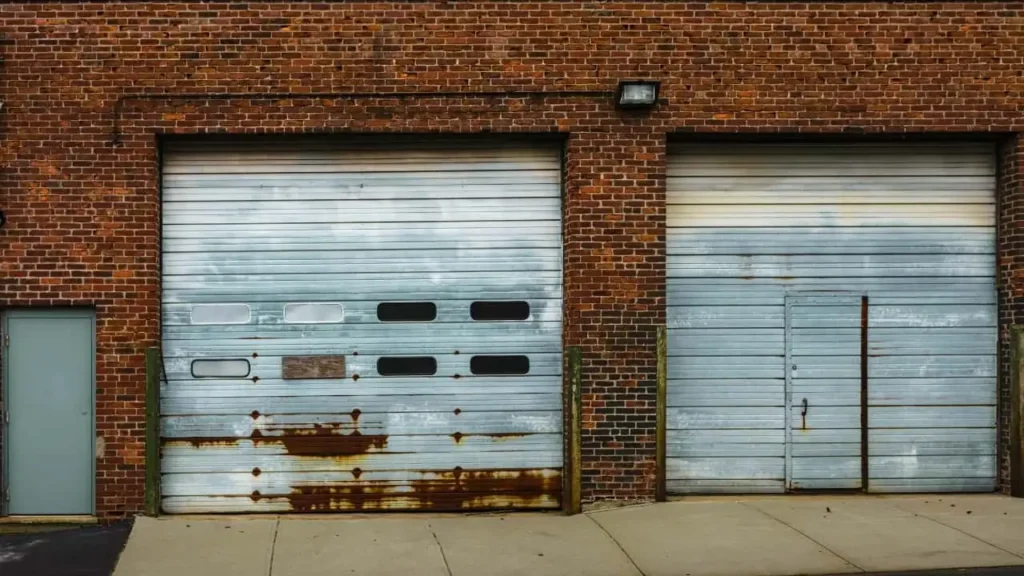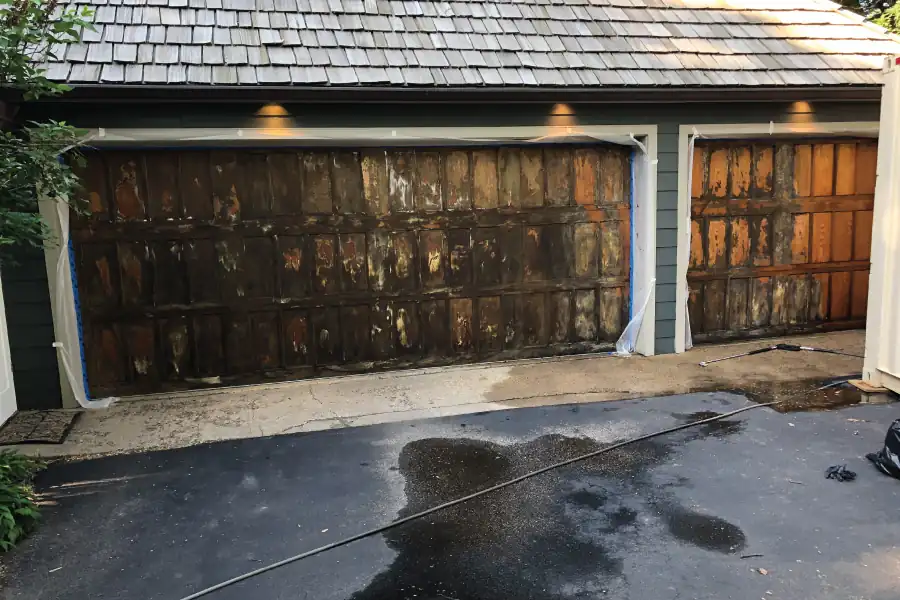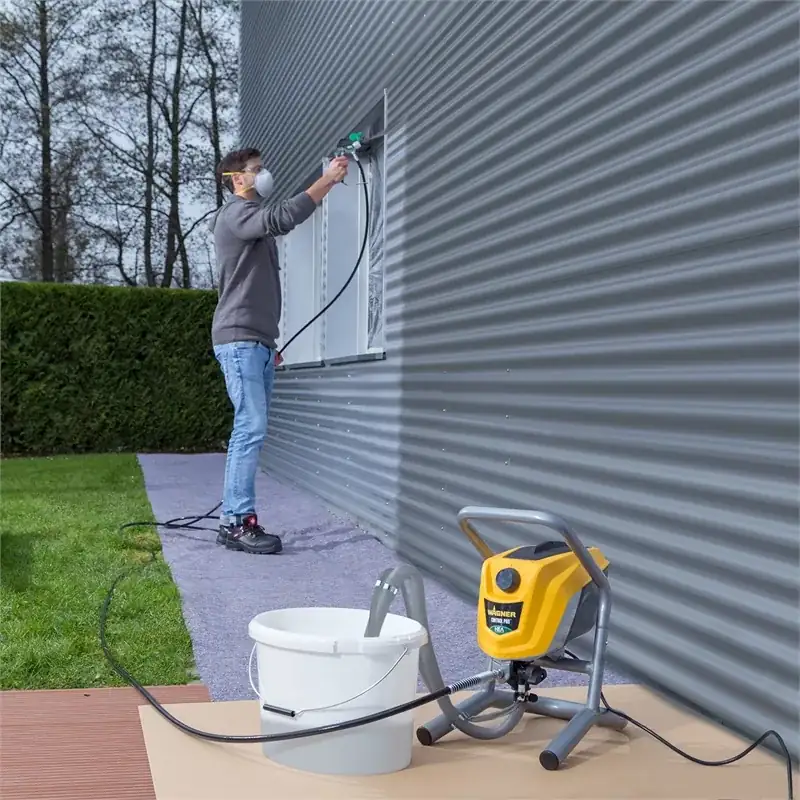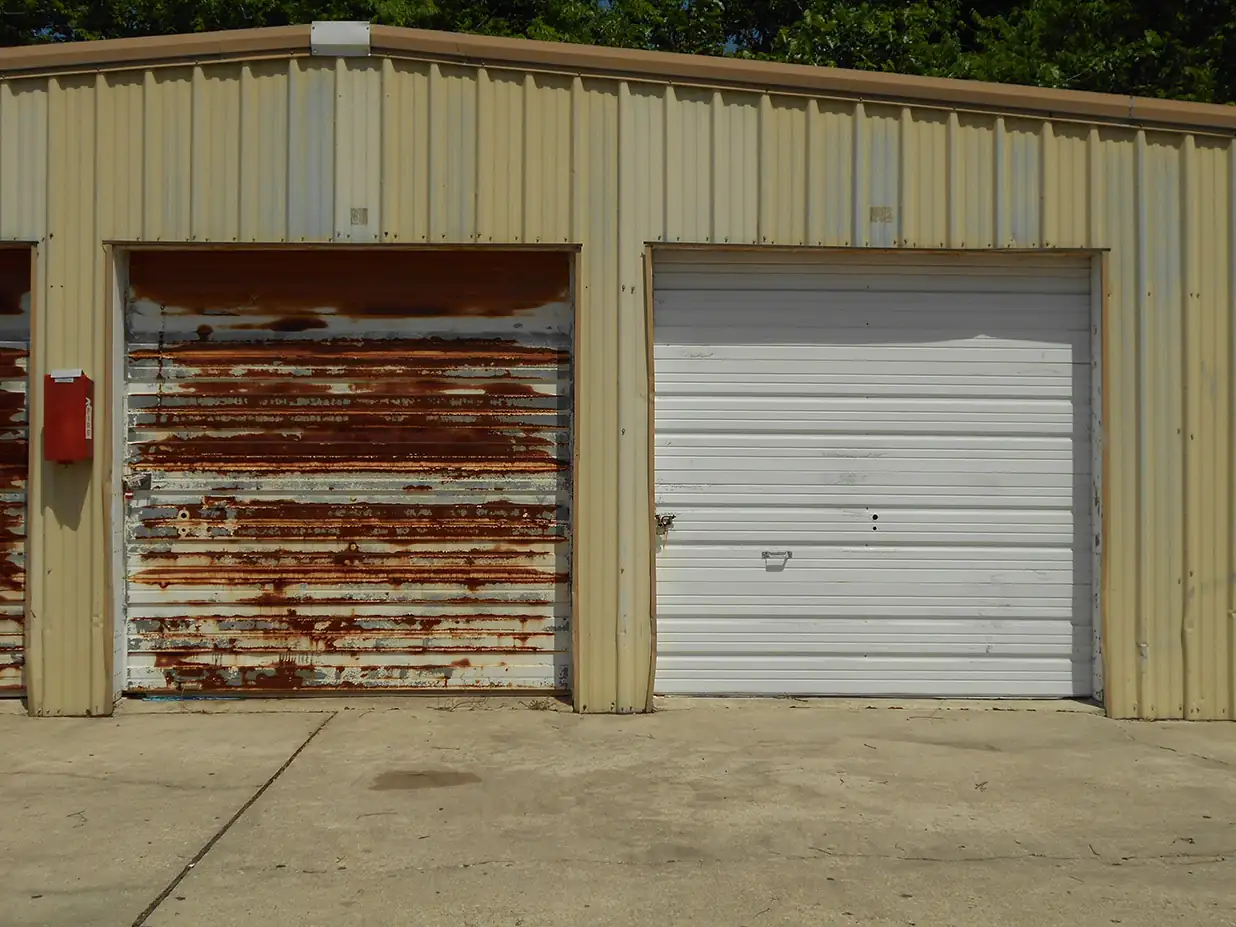A garage door rust looks bad and can weaken your garage’s structure. Rust forms when the iron in the steel reacts with oxygen and moisture in the air.
If you ignore the rust, it can spread and cause more damage, leading to expensive repairs. But don’t worry! You can fix this with some garage door paint and a bit of effort. With a little work, you can restore your door.
Key Takeaways
- Rust on garage doors is a common problem that can be addressed with simple DIY methods.
- This blog provides a step-by-step guide to effectively remove rust and prevent future occurrences.
- Learn to identify the extent of rust damage and when to seek help from a professional.
- Discover essential tools and materials required for successful rust removal and prevention.
- By following these tips, you can maintain a clean and functional garage door for years to come.
5 Simple Steps to Remove and Prevent Garage Door Rust

This complete guide shows five simple steps to remove rust and keep it from coming back. We will split the process into easy tasks, so anyone can do it.
You will learn how to gather the right tools and know how to stop rust from returning. This way, you can protect your garage door and make it last longer.
Step 1: Clean the Rusted Area
It’s very important to start fresh before using any rust removal method. First, make a cleaning mixture with warm water and gentle soap. This will help get rid of dirt, grime, and rust pieces that could block the rust removal process.
Take a clean cloth, dip it into the mixture, and squeeze out the extra water. Then, wipe the rusty area carefully. Make sure to remove all dirt and debris. This step is key for the rust remover to work well.
After cleaning, rinse the area with clean water and dry it with a fresh cloth.
Step 2: Apply Rust Remover or Vinegar
To remove rust from your garage door rust, you need to apply a rust remover or use white vinegar. These options are strong at breaking down rust and getting the affected areas ready for more work.
The acid in vinegar, or the chemicals in rust removers, help to break apart the rust, which makes it easier to clean away the rusted spots. This important step is key to restoring your best garage door insulation. It ensures that the surface is smooth for the next repairs and treatments.
Step 3: Scrub and Sand the Surface
Using a steel-wool pad or wire brush, scrub the rusted garage door firmly. This helps to get rid of loose rust pieces. Then, sand the affected areas with filler or sandpaper.
This makes the surface smoother. Preparing this way is important for applying primer and paint later. Good scrubbing and sanding create a clean and even surface for the next steps in removing rust.
Step 4: Prime and Paint for Protection
To protect your garage door rust, make sure to prime the affected areas after cleaning. Use a good rust-resistant primer as a solid base for the paint. Cover all exposed metal spots well to prevent rust and keep your door safe.
Choose the right garage door paint and apply several coats for better protection. Proper priming and painting will not only make your door look better but also help it last longer by fighting rust over time.
Step 5: Regular Maintenance to Prevent Rust
Regular maintenance is important to keep your garage door safe from rust. Check your door often for any rust signs. Clean the affected areas using mild soap and warm water to get rid of dirt. If you see bare metal spots, use a rust inhibitor or primer.
Make sure the paint on your garage door is in good shape. Quickly touch up any chips or scratches. By being proactive with maintenance, you can help your garage door last longer and stop rust from forming.
Identifying the Extent of Rust Damage on Your Garage Door

The steps listed above show how to remove rust, but the method can change based on how bad the rust is. You should check how much rust is on your garage door to choose the best way to fix it.
If the rust is only on the surface, you might be able to handle it with DIY methods. However, if the rust has gone deep into the metal or made holes, you will need more expert help.
6. Visual Inspection Tips for Homeowners
The first step is to carefully check your garage door. Look for any changes in color, peeling paint, or bumps. This can mean there is rust. Pay close attention to the edges, corners, and bottom of the door. These areas can get wet more easily.
Next, check the tracks, garage door rollers, and other parts for rust or damage. Rust on these parts can cause problems and stop them from working well.
If you are worried about how bad the rust is or if it looks like it’s spreading a lot, it’s a good idea to ask a professional for help.
7. When to Consider a Professional Assessment
DIY methods can be good for small rust problems, but sometimes you need a professional. If you see any of the following, it’s better to reach out to a trustworthy garage door service provider:
- Extensive rust: If rust covers a large area or has gone through the metal, a professional can check if it’s still strong. They can suggest the right repairs or replacement options.
- Holes or cracks: Rust can make the metal weak, leading to holes or cracks. A professional can fix these problems to keep your garage door working well and secure.
- Warping or bending: Too much rust can bend or warp the metal, causing issues with how the door opens and closes. Professionals have the skills and tools to fix these problems.
Essential Tools and Materials for Rust Removal
Before you start your rust removal project, it’s important to have the right tools and materials ready. This preparation will help you work better and faster.
Here are some key items to collect before you begin. Having these on hand will make your rust removal process easier and more successful.
8. Safety Gear and Cleaning Agents

Safety is very important when you work on home improvement projects, including rust removal. Before starting, make sure you have the right safety gear:
- Gloves: It’s important to protect your hands. Rust particles and chemicals can irritate your skin. Always wear a strong pair of work gloves while working.
- Eye protection: Rust removal usually involves scrubbing, sanding, and spraying. This can send small particles toward your eyes. Use safety glasses to keep your eyes safe from possible damage.
- Mask: Breathing in rust particles or chemical fumes can be bad for your lungs. Wear a dust mask or respirator to keep from inhaling these harmful substances.
9. Brushes and Sanding Equipment
The following tools will help you remove rust from your garage door:
- Wire brush: Use a wire brush with stiff bristles to scrub off tough rust and old paint. Pick one that has a comfortable grip for better control.
- Steel-wool pad: A steel-wool pad is good for lighter rust or for finishing after a wire brush. Select a fine-grade steel wool so it won’t scratch the metal surface.
- Sandpaper: It is useful to have different types of sandpaper. Start with a rough grit to get rid of tough rust. Then, use finer grits to make the surface smooth.
Also Read: Direct Drive Garage Door Opener – Top Picks & Guide 2025
Conclusion
To keep your garage door rust looking good and lasting longer, you need to take care of it regularly. By following some easy steps to get rid of rust and stop it from coming back, you can help your garage door last longer and look better.
Checking your door often, cleaning it, and putting on protective coatings will keep rust away. It is important to deal with rust quickly. This way, your door stays nice and works well, too. Stay ahead in caring for your garage door to avoid expensive repairs later.
Frequently Asked Questions
1. What Causes Rust on Garage Doors?
Rust on garage doors happens mostly because of a process called oxidation. In this process, iron in the metal reacts with oxygen and water. Things in the environment, like humidity, rain, and road salt, speed up this process. This leads to rust starting to appear.
2. How do I get garage doors in rust?
Modern garage doors are usually treated to help prevent rust. However, steel garage doors can still rust if they remain wet for a long time or if there are scratches that damage the metal. For specific advice, reach out to your garage door manufacturer.
3. How many C4 for garage door rust?
Using explosives such as C4 to get rid of rust on a garage door is very dangerous and against the law. It is not a game, and it won’t save you money. Instead, stick to safe and legal ways to deal with rust.
4. What does it take to break garage door rust?
“Breaking” garage door rust means getting rid of it, not damaging the door. Talks online about “raids” or “attacks” aren’t real and should not be taken seriously. It’s important to pay attention to good rust removal methods and stay aware of safety risks.
5. How to stop garage door rust?
Preventing rust requires regular care. Make sure to clean the garage door, especially after bad weather. Fix any paint chips or scratches right away. Putting on protective coats of paint also helps stop rust.
6. What Does It Mean If Your Garage Door Is Rusting?
Rusting happens when elements like water and air make the iron in your garage door react with oxygen. This reaction creates iron oxide, which shows up as rust spots. These spots indicate damage that needs fixing to stop the affected areas from getting worse.
7. How can you effectively remove rust from a garage door?
To remove rust effectively, begin by using white vinegar to loosen the rust. Next, scrub it with a wire brush. If you find any holes, use auto body filler to fill them in. After that, sand the area and repaint the affected areas with a paintbrush.
8. Is it possible to prevent rust from forming on a garage door?
To prevent rust, you need to take care of your garage door. Regular maintenance is important. Using protective coatings, such as paint or sealant, is helpful. Also, check for any early signs of rust often. If you find them, deal with them right away. This can reduce the effects of things like weather and other environmental factors.
9. Can rust on a garage door impact its functionality or durability?
Rust can greatly affect how well your garage door works and lasts. It can make it difficult to open and close smoothly. If you do not take care of it, rust may damage the door’s structure. This could lead to poor performance and affect it for a long time.

